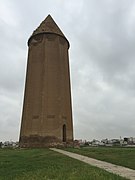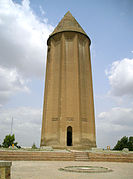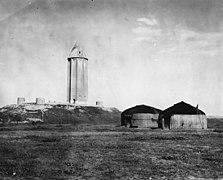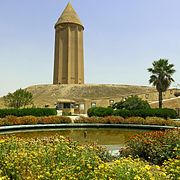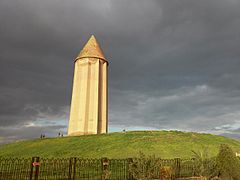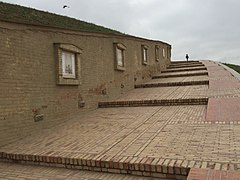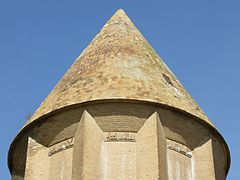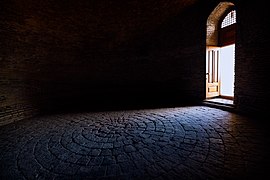Built in 1006 AD as the tomb of Qaboos ibn Washemjir, a Ziyarid ruler and man of letters, this 53-meter-high mausoleum is located near the site of the ancient city of Jorghan in northeastern Iran and bears witness to cultural exchange between the nomadic peoples of Central Asia and the ancient civilization of Iran. The tower is the only remaining evidence of Jorghan, a former center of art and science that was destroyed during the Mongol invasions of the 14th and 15th centuries. It is an outstanding, technically innovative example of Islamic architecture that influenced religious architecture in Iran, Anatolia, and Central Asia. Built of unglazed fired bricks, the monument’s complex geometry forms a tapered cylinder 17-15.5 meters in diameter, topped by a conical brick roof. It illustrates the development of mathematics and science in the Muslim world at the turn of the first millennium AD.
| office held by head of the organization |
http://g.co/kg/m/0k2jv_s |
| Commons category |
Gonbad-e Qabus |
| coordinate location |
Point(55.169166666 37.258055555) |
| Iranian National Heritage registration number |
86 |
| start time |
1932-01-06T00:00:00Z |
| date of official opening |
1006-01-01T00:00:00Z |
| native label |
برج گنبد قابوس |
| area |
1.4754 |
| height |
53 |
| World Heritage criteria |
World Heritage selection criterion (ii) |
| World Heritage criteria |
World Heritage selection criterion (i) |
| World Heritage criteria |
Larousse Encyclopedia online |
| directions |
در کنار گرگان قدیم که جزایالت استراّباد |
| country |
Camarmilla River |
| image |
http://commons.wikimedia.org/wiki/Special:FilePath/Gonbad-e%20Qabus%20Tower%20by%20Hadi%20Karimi.jpg |
| commissioned by |
Category:Interior of Palau de la Música Catalana |
| named after |
dome |
| named after |
Category:Interior of Palau de la Música Catalana |
| architectural style |
Ziyarid architecture |
| made from material |
Category:Castle in Malbork |
| executive body |
Gonbad-e Qabus |
